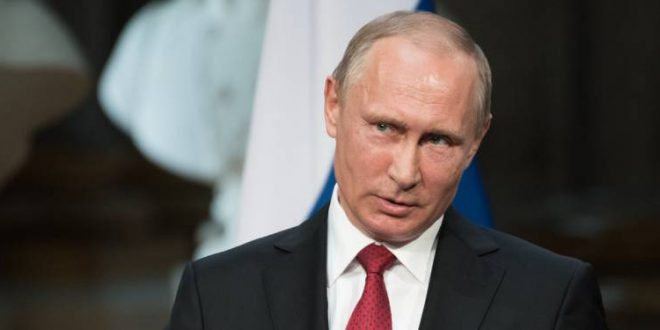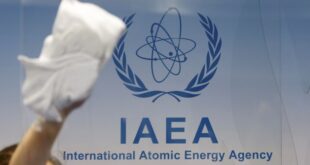Saudi Arabia and Russia are considering a long-term agreement to extend cooperation with the Organization of the Petroleum Exporting Countries (OPEC). The potential deal. announced during Saudi Crown Prince Mohammad bin Salman`s weeks-long tour of the U.S.. would see the two states enter into a 10- or even 20-year agreement to manage oil markets.
While the pact signals closer Russian-Saudi cooperation on energy. it does not necessarily signal a Saudi pivot towards Russia or an abandonment of the U.S.-Saudi alliance. Surprisingly. the deal could actually benefit U.S. oil producers.
King Salman became the first Saudi monarch to visit Moscow in October 2017. He oversaw the signing of several bilateral energy pacts during his visit. including an agreement to create a $1 billion joint energy fund. joint investment deals worth over $3 billion. and a $1.1 billion agreement for Russian petrochemical company Sibur to build a plant in Saudi Arabia. The two states. whose combined oil production totals one-fifth of global supplies. also led the way to a deal to cut OPEC and non-OPEC oil production by 1.8 million barrels per day in early 2017.
Saudi Arabia recruited Russia. which is not an official OPEC member. along with other non-OPEC oil exporters. to remove oversupply from the market after oil prices collapsed to $26 per barrel in 2016. Intended to boost prices by cutting production levels and drawing down global stockpiles. Riyadh and Moscow extended the deal in November 2017 to cover all of 2018. and it will be reviewed again in June and December.
Whether or not the arrangement holds will rest largely on Moscow’s willingness to give up its ability to manipulate oil policy in exchange for the stability of a long-term deal. Russia’s appetite for taking OPEC’s official policy stances. particularly when OPEC’s goals and Russia’s aims do not align. is evidently low. Russia has already expressed dissatisfaction at the length of the extension and would prefer to exit sooner. The utility of a rise in oil prices is limited for Moscow. which continues to suffer from a dampened environment for domestic investment. unless production volumes can be increased as well to boost revenues.
For Riyadh. there is clear incentive to bring Russia into a long-term pricing alliance with OPEC. Getting non-OPEC oil exporters to set production limits to chip away at the global oil glut was Riyadh’s key victory. leading to today’s partial price recovery. Continuing its agreement with Moscow would be in Riyadh’s interest. but the Kremlin may ask the Saudis for added incentives. For instance. Saudi Arabia could play an important role in solidifying an outcome to the power struggle in oil-rich Libya to Moscow’s advantage.
Opportunities to extend cooperation into the areas of defense and security are limited. particularly given the minefield of geopolitical differences between Moscow and Riyadh — most notably regarding Saudi Arabia’s arch-rival Iran. which works closely with the Kremlin in regional conflicts such as Syria. The strength of the U.S.-Saudi relationship is also a major stumbling block to serious strategic cooperation.
Still. the Saudis understand the growing importance of Russia in the region. Indeed. Russia’s strategic cooperation with countries in the Middle East and North Africa continues to grow. with the most recent efforts occurring in Egypt. where the Russian military is finalizing a deal that will allow its warplanes to use Egypt’s military bases. and in Lebanon. where Moscow is working on a military cooperation agreement with the Lebanese government.
Russia is eager to extend its influence further. Moscow would love see Riyadh move closer to their view on the situation in Syria. or to move towards potential purchases of Russian weaponry such as the S-400. For Riyadh. a closer relationship with Moscow could give it an opportunity to influence one of Iran’s key regional partners. particularly on issues of deep concern for Saudi Arabia such as the conflict in Yemen.
Despite the prospects of deeper ties. U.S. policymakers and oil majors need not be concerned for four main reasons. First. substantively the deal does not represent anything new — it largely formalizes the working relationship between Moscow and Riyadh that made the output cut deal possible. Second. the pact’s details have yet to be ironed out. with nothing concrete on the horizon that both parties have agreed to. Third. a long-term pact to actively manage OPEC and non-OPEC members’ production in a way that shores up prices is only good news for the U.S. oil exporters. given that shale’s production costs are higher.
Fourth. the pact does not suggest a weakening of Saudi Arabia’s commitment to its alliance with the U.S.. which remains of prime importance to the kingdom’s security interests. Washington remains a vital partner to Riyadh. and Mohammed bin Salman’s visit to the U.S. only underscored the closeness between the two states. Saudi Foreign Minister Adel Jubeir praised military cooperation between the U.S. and Saudi Arabia. highlighting military ties that go back decades. He also noted the depth of economic relations between Washington and Riyadh. noting that the kingdom has $800 billion invested in the U.S. and intends to “take our economic relationship with the U.S. to a higher level.“
In short. the proposed pact does little to alter the reality on the ground. While Russia would like to think that it is driving a wedge between Washington and Riyadh. the alliance is not likely to be weakened by this in the short or long term.
Moscow and Riyadh maintain differences in their preferred approach to oil markets. and this will complicate negotiations on a 10- or 20-year deal. Moscow’s alliance with Iran will also remain a problem for Riyadh. and one that the Saudis will not soon sweep under the rug.
Moscow and Riyadh must first resolve those substantive issues before they can hammer out an oil deal that truly matters.
 Iran Energy News Oil, Gas, Petrochemical and Energy Field Specialized Channel
Iran Energy News Oil, Gas, Petrochemical and Energy Field Specialized Channel




